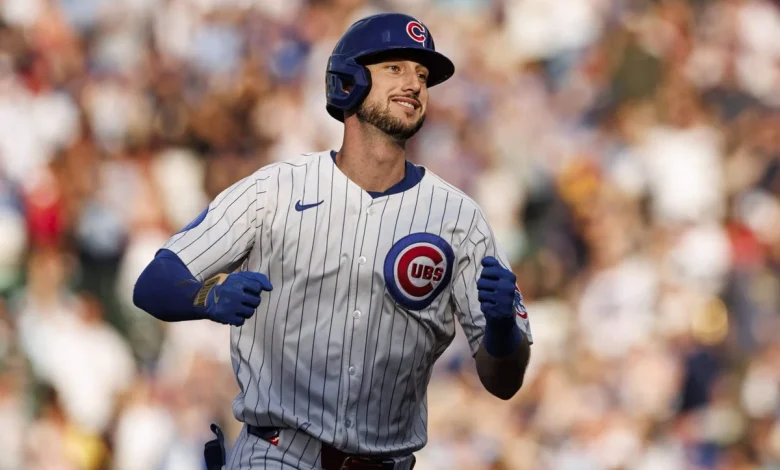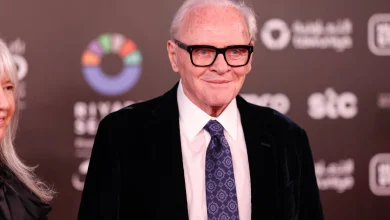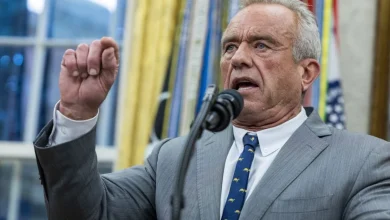Why Yankees’ No. 1 free-agent target should be Kyle Tucker, not Cody Bellinger

The most impressive at-bat of the New York Yankees’ 2025 season came against the pitcher who said he would not play for the organization again, even if he were dead.
Boston Red Sox closer Aroldis Chapman was dominant this year. He allowed just eight hits to left-handed hitters, including one to Yankees outfielder Cody Bellinger. In mid-September at Fenway Park, Bellinger ripped an opposite-field double off Chapman, winning a nine-pitch battle. Batters hit just .078 when getting to two strikes against Chapman, so the odds of Bellinger coming through were minuscule.
It was one of several notable moments in Bellinger’s all-around impressive season. He finished the year with a 125 wRC+, 4.9 fWAR, 11 Defensive Runs Saved (DRS) and six outs above average (OAA). Yankees general manager Brian Cashman told reporters earlier this month that he expects Bellinger to opt out of his $25 million player option and become a free agent. All signs point toward the Yankees pursuing Bellinger in free agency with the hopes of re-signing him to a long-term contract.
“Certainly would love to have him with our team moving forward, but we haven’t had any of those discussions,” Cashman said. “I haven’t had any conversations with (Bellinger’s agent) Scott Boras. Bouquets his way, without a doubt. He helped us on both sides of the ball, he’s a versatile player, and he was great in our clubhouse.”
All nine pitches from Cody Bellinger’s at bat against Aroldis Chapman pic.twitter.com/IlQUDvL9sH
— Talkin’ Yanks (@TalkinYanks) September 13, 2025
But before deciding whether to reunite with Bellinger, the Yankees should exhaust all efforts to sign Chicago Cubs outfielder Kyle Tucker. He should be priority No. 1, not Bellinger. The thinking here is quite simple: Tucker is better, and the Yankees should be amassing the best talent.
Consider the following table: Who would you rather have, regardless of cost?
Blind comparison of Tucker, Bellinger
PlayerGames playedAVGOBPSLGHRRBIwRC+fWARDRSOAA
651
.251
.310
.436
102
377
105
11.8
10
17
661
.277
.365
.514
134
433
143
23.4
28
0
Player A is Bellinger.
Player B is Tucker.
The only category where Bellinger, 30, has been better than Tucker, 28, over the past five seasons is outs above average, which is a range-based metric of skill that shows how many outs a player has saved. Bellinger had more fWAR than Tucker this season, but the latter was still the better overall hitter even as he battled a hairline fracture in his right hand, and a calf strain, injuries that limited Tucker to 136 games.
Over the past five years, Tucker has not had a season with an fWAR under 4.2. Bellinger has eclipsed that number twice in that span. Bellinger was so bad in his final two seasons with the Los Angeles Dodgers that the club non-tendered the 2019 National League MVP. He’s also one year removed from the Cubs salary-dumping him for Cody Poteet. That trade with the Yankees allowed the Cubs to create more financial flexibility to add … Tucker to their roster.
“Kyle had a good experience here,” Cubs president of baseball operations Jed Hoyer said. “He certainly enjoyed playing in Chicago. I think that Wrigley and our fans made a huge impact. But, ultimately, Kyle has a big decision. He’s earned the right to not only be a free agent but to be a coveted free agent. I would expect that they would play their cards kind of close to the vest.”
One of Yankees fans’ biggest gripes is the team strikes out too much and doesn’t put the ball in play enough. Bellinger excels in this area and was lauded for it all season long. His strikeout rate was a career-best 13.7 percent. Tucker’s was 14.7 percent. But over the past five seasons, Bellinger’s strikeout rate was 19 percent, while Tucker’s was 15 percent.
In addition to not striking out much, Tucker’s contact quality far exceeds Bellinger’s. Even if we remove the two seasons in which Bellinger struggled with the Dodgers, Tucker’s barrel percentage is 11 percent over the past three seasons, while Bellinger’s is 6.7 percent. Bellinger’s xwOBA, a metric that measures contact quality, is .321 during that span compared to Tucker’s .388.
As they age, Tucker’s offensive profile is less risky than Bellinger’s. Outside of 2025, a down year by his standards, Tucker hasn’t had difficulty hitting the ball hard, while Bellinger has only one season in the past five years in which he ranked in the top half of the league in average exit velocity. Bellinger outperforms his metrics because he can pull the ball, which maximizes any hitter’s production. But Tucker has a higher pull percentage than Bellinger and hits the ball harder, meaning he would benefit greatly as a left-handed hitter playing half his games at Yankee Stadium.
There’s no doubt Bellinger benefitted by playing half his games there this year. He had a 152 wRC+ in The Bronx, compared to a 97 wRC+ on the road. That discrepancy alone may give teams some pause as they consider signing him this offseason. Meanwhile, Tucker had a 113 wRC+ this season at Wrigley Field (Bellinger had a 97 wRC+ there in 2024), a challenging park for left-handed hitters. On the road, his wRC+ was 156.
Cody Bellinger makes a sliding catch during Game 4 of the ALDS. (Al Bello / Getty Images)
The biggest argument for the Yankees to pursue Bellinger over Tucker is defensive versatility. Bellinger can play all three outfield positions and first base. If the Yankees don’t re-sign Trent Grisham, there will be a vacancy in center field that Bellinger could fill. That would then give Jasson Domínguez a possible path to become an everyday player in 2026.
However, Bellinger graded out negatively in center this season, finishing with minus-3 DRS and minus-1 OAA. The Yankees’ best defensive alignment would likely have Bellinger in left field, Aaron Judge in right field and an above-average fielder in center field, which would mean another season of Domínguez not playing every day.
Tucker’s defense has slipped in the past three seasons. He’s been worth 8 DRS and minus-5 OAA. He’d likely play left field with the Yankees, which is a challenging position at home because of how spacious it is. It would force the Yankees to get an excellent fielder to man the middle of the outfield.
But how much does defensive fit truly matter to the Yankees if they were willing to pay Juan Soto $765 million last offseason? Soto is a significantly worse outfielder than Tucker. Signing him would have either forced Judge to play center field, where he was the second worst in OAA in 2024, or Soto would have been in left field, which would have been a disaster. Also, the Yankees had trade discussions with the Houston Astros regarding Tucker, so the defensive fit didn’t matter to the organization — at least for this past season. Should it matter in 2026 and beyond?
Kyle Tucker is expected to land the largest free-agent contract this offseason. (Ronald Martinez / Getty Images)
What’s looming over all of this is the potential cost for both players. Tucker will likely get the biggest contract among all free agents, possibly exceeding $400 million. Bellinger could push $200 million if his market explodes. But paying for the lesser player usually gets a team … lesser results.
Let’s be clear: Re-signing Bellinger would not be a bad outcome for the Yankees, but it should only come after an intense pursuit of Tucker.
Another thing: Aaron Judge factor. Judge will turn 34 next season. At some point, likely sooner rather than later, Judge will no longer be otherworldly. The Yankees will need offensive coverage when that time comes. But getting top-of-the-line talent in free agency is going to be extremely difficult until the 2028 offseason, when Yordan Alvarez, Ronald Acuña Jr. and Gunnar Henderson could become available. Before then, the best offensive free agent arguably will be Seiya Suzuki or Jeremy Peña. Options are limited in the next two years.
The window to capitalize with Peak Judge is now. Over the past five seasons, Tucker’s 143 wRC+ ranks ninth in the sport. Pairing him with Judge would give the Yankees a potent duo at the top of their lineup.
If you are one of the people who believes Bellinger should be the Yankees’ main priority, ask yourself this question: How many playoff games are won because a team’s outfielder made routine plays, or even spectacular ones? And then ask yourself this: How many playoff games are won because your team has more offensive talent in the lineup?
These are the questions the Yankees should be asking, too.





